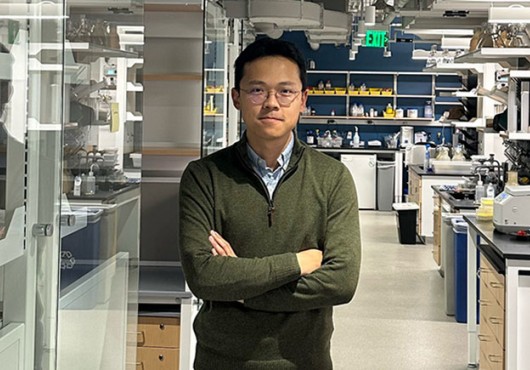Howard Green, a founding father of regenerative medicine and the George Higginson professor of cell biology at HMS, will receive the 2010 Warren Alpert Foundation Prize on Sept. 27. Colleagues will honor Green at an afternoon symposium featuring talks by prominent stem cell researchers.

Skin Engineering: The Beginning of Therapy with Cultured Cells
The Warren Alpert Foundation Prize, which confers an award of $200,000, recognizes researchers for laboratory discoveries that have been translated into patient therapies or for findings with real potential to improve human health. Green’s work embodies the spirit of the prize: he developed the first therapeutic use of cells grown in the lab. Before stem cells gained prominence, Green cultivated them to generate skin grafts for burn patients. As an Alpert Prize recipient, Green joins an elite international group of researchers, seven of whom have also won a Nobel Prize.
“Right now there are but a handful of proven stem cell therapies, and two of the major ones are directly derived from the pioneering work of Howard Green,” said Elaine Fuchs, a well-known skin stem cell biologist and the Rebecca Lancefield professor at Rockefeller University. Fuchs, who is also a Howard Hughes investigator and the current president of the International Society for Stem Cell Research, completed her postdoctoral work in Green’s lab.
Roots in a TumorGreen did not set out to discover a way to grow human skin. He was studying unusual tumors called teratomas in his MIT lab in the mid-1970s when serendipity struck. Teratomas give rise to a hodgepodge of tissues ranging from muscle to bone. A graduate student in Green’s lab named James Rheinwald noticed that some mouse teratomas generated colonies of cells resembling epithelial tissue, which lines the surfaces of structures throughout the body. At the time, epithelial cells could not be cultured in the lab.
The colonies were growing on beds of connective tissue cells called fibroblasts. The scientific literature indicated that such “feeder” cells often spur otherwise reticent cells to proliferate.
Green had previously developed a line of fibroblast cells called 3T3, so he had all the tools at hand for an experiment. Rheinwald (who is now an HMS associate professor of dermatology at Brigham and Women’s Hospital) and Green isolated epithelial cells from the tumor and added 3T3 cells, which were first treated with radiation to keep them from growing and competing with the epithelial cells. Colonies formed with structures resembling the outer layer of the skin, or epidermis. The team had succeeded in replicating keratinocytes, the basic building blocks of the epidermis.
Next, working with discarded foreskins from circumcised newborns, Rheinwald and Green repeated the experiment with normal human keratinocytes.
“Once you can grow vast amounts of human skin cells in culture, you have to ask yourself what you can do with them,” Green said.
Green resolved to help burn victims and soon forged a connection with Nicholas O’Connor, director of the Burn Unit at the then Peter Bent Brigham Hospital. Green continued to improve his method and, in 1980, O’Connor put it to the test. A skin biopsy was taken from a patient with burns that were not life threatening. Green used keratinocytes from the biopsy to generate grafts, which aided in the patient’s recovery.
O’Connor still marvels at the pace of the overall project. “If someone else had made this discovery in the lab, I’m not sure it would have moved to the clinic as quickly as it did,” O’Connor said. “Howard is a basic scientist, but he went to medical school and has a giant desire to take care of people. Plus, he’s incredibly determined.”
That determination came in handy in 1983, when Boston Shriners Burn Hospital for Children admitted two young brothers with burns covering 97 and 98 percent of their bodies. By that time, Green had moved to HMS. His lab, housed in a building dedicated to basic science, was transformed into a skin-manufacturing facility, and his postdoctoral researchers moonlighted as epithelium engineers. The boys survived, thanks to the lab’s tireless efforts.
The case demonstrated both the life-saving power of Green’s method and the need for a production plant. Green’s team started a company called BioSurface Technology to grow skin for patients across the United States and beyond. In 1994, BioSurface Technology was acquired by Genzyme, which currently supplies epidermis grafts to between 100 and 200 victims of severe burns each year. The Japanese company J-TEC and the Korean company Tego Science also provide this service using Green’s method.
Stem Cell ConnectionIt was only after surgeons began applying lab-grown skin to patients that Green realized the role adult stem cells play in the culturing process. Some keratinocytes divide over and over without stopping or becoming specialized. These are now known as adult stem cells, and Green’s colonies languished without them.
Green had inadvertently developed a method for growing skin stem cells outside the body. Scientists later discovered that they could keep other types of stem cells alive by following Green’s example and cultivating them alongside fibroblasts. Researchers can now grow corneal stem cells, for example, which are used to restore sight in eyes damaged by chemical burns. The entire embryonic stem cell field is rooted in Green’s findings.
“This award to Dr. Green is a reminder of the power and promise of regenerative medicine,” said William Chin, executive dean for research at HMS. “It’s also a prime example of translational science and medicine in action.”
The Warren Alpert Foundation supports innovative individuals and organizations dedicated to understanding and curing disease through groundbreaking research, scholarship and service. Prize recipients are selected by the foundation’s Scientific Advisory Committee, composed of internationally renowned biomedical scientists and chaired by Harvard Medical School Dean Jeffrey Flier.


